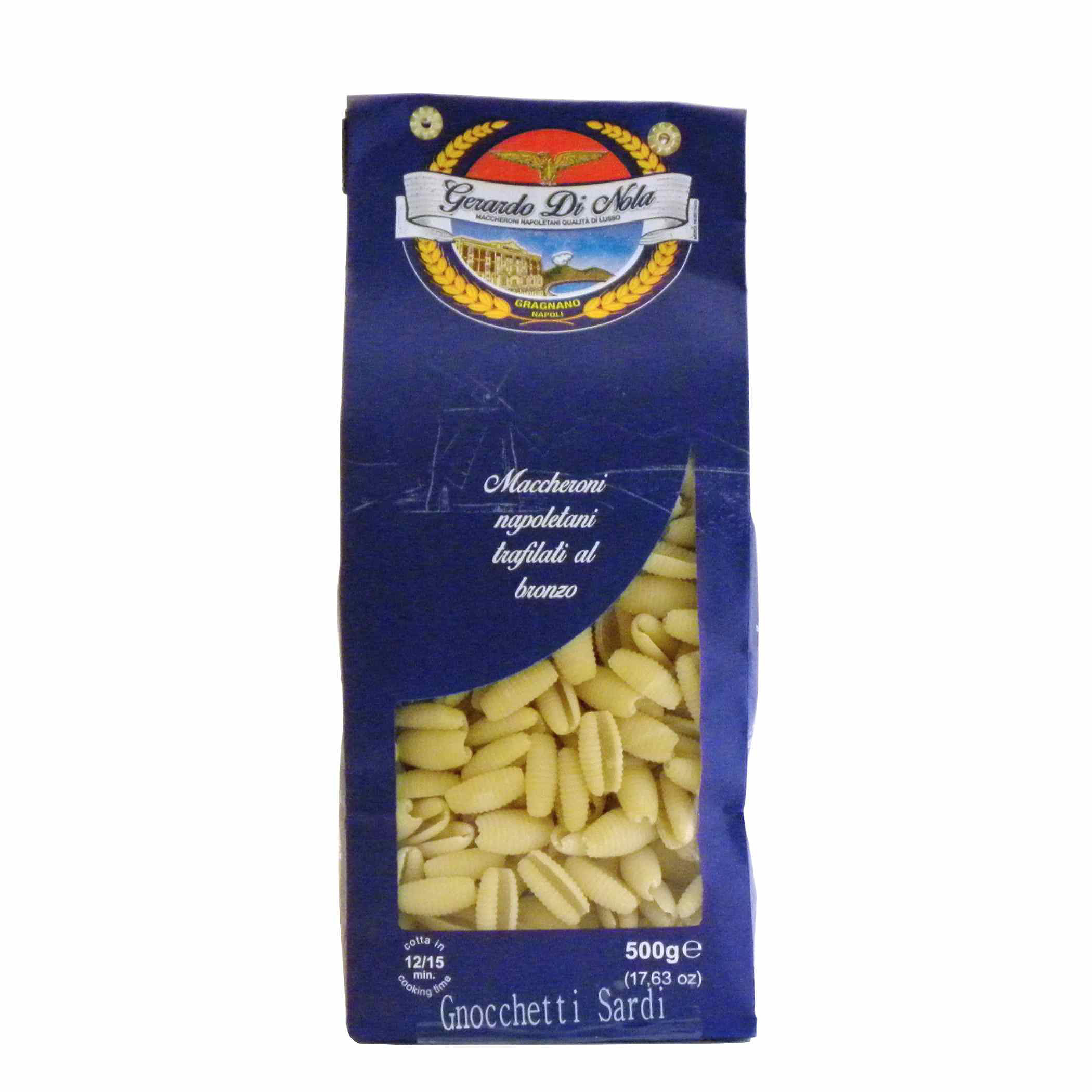Description
GNOCCHETTI SARDI GERARDO DI NOLA: PAIRINGS
Particularly tasty with ricotta or pecorino cheese, Gnocchetti sardi are also excellent with tomato or meat sauces.
A typical recipe of the Sardinian cuisine is ‘Malloreddus alla Campidanese’: fresh sausage, tomato puree, extra virgin olive oil, basil leaves, garlic, onion, saffron, grated pecorino cheese and salt
GNOCCHETTI SARDI GERARDO DI NOLA: INGREDIENTS
Durum Wheat Semolina, Water
GERARDO DI NOLA: AT THE VERY HEART OF PASTA
At the beginnig of the 19th century Gragnano was already well known for the quality of its macaroni, and there were more than 70 pasta factories. In the middle of the century the production reached its peak: 75% of the active population worked in the ‘macaroni’ industry and pasta factories were more than 100, producing more than 1000 quintals of pasta per day.
July 12th 1845 is an important date in the history of the fame of Gragnano as the homeland of pasta. That day, during a lunch, the King of the Kingdom of Naples, Ferdinand II of Bourbon, granted to the pasta producers of Gragnano the high privilege of providing the court of any long pasta. Since then Gragnano became the City of Macaron.
The pasta factory Gerardo di Nola was born in Gragnano in the 70s of the 19th century. In the 30s of the 20th century, the company moved its headquarters to Castellammare di Stabia, where it remained until 1995, always producing pasta of great quality.
Today the pasta factory has moved back to Gragnano, with the aim to continue the journey giving even more luster to artisan pasta and to this historical company, which over time evolved into a right mix of past, present and future.
The pasta Gerardo di Nola is made in respect of tradition and with love.
It is made exclusively with Italian durum wheat semolina, provided by selected partners, mixed with water from the local aquifer. Water is in fact one of the determining factors for the taste of Gragnano’s pasta and that’s why Gerardo di Nola uses only the water that flows from the sources of Monte Faito, poor of limestone, which gives pasta unique features.
Gerardo di Nola uses bronze dies that shape the dough through keyholes and make it rough and porous at the right point, with a lively and full-bodied texture, perfect to receive and enhance sauces and seasonings.
The drying method – one of the most important steps of the production – is low-temperature and slow, taking from 15 to 24 hours depending on the cuts, to preserve the organoleptic properties of the ingredients.
The short pasta are dried on wooden frames, while the long ones are arranged in static cells, on rods and then on trolleys.
The packaging is elegant and strictly manual.












Customers review
Rate it!
Only logged in customers who have purchased this product may leave a review.
Write A ReviewReviews
There are no reviews yet.